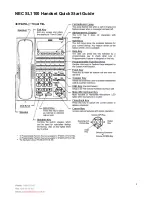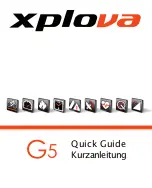
820i Programmable HMI Indicator/Controller
20
Visit our website
In multi-interval, the scale has one capacity, which is segmented into weighing intervals, either two or three intervals, each with
different display division sizes. As the weight value exceeds an interval or set interval, the display division will increase, as the
weight falls below an interval or set interval, the display division will decrease. The tare can only be taken in the first interval.
For example,
Range 1 is 0-30 x 0.01 lb.
Range 2 is 30 - 60 x 0.02 lbs.
3.1.5 Total Scale Configuration
The output of A/D scales, serial scales, or
iQUBE
systems can be configured to function as a total scale. Once configured and
calibrated, the total scale can be used as a source for other system functions, including streaming, setpoints, print formatting,
and analog output.
To set up a total scale from the indicator front panel, use the scale configuration display (see
) to select the A/D
scales or
iQUBE
systems to configure as a total scale. (Use the
Change Type
softkey to show available A/D scales or
iQUBE
systems; use the right navigation key to select the total scale sources.) In
Revolution
, assign the total scale to an unused
position then select source scales from the existing A/D scales or
iQUBE
systems.
The FORMAT configuration of the total scale (see
) should match that of the source scales. However, the
value specified for the total scale GRADS parameter should be specified as the sum of the GRADS values for the source
scales. For example: if SCALE 1 is set to GRADS=10000, SCALE 2 to GRADS=5000, SCALE 3 (the total scale) should be set
to 15000 grads.
The total scale will show an overrange indication if the maximum capacity of any source scale is exceeded, and show dashes if
any source scale reads a negative value. Source scales will respond to Tare and Zero operations performed on the total scale.
Total scale function is not supported for multi-range or multi-interval scales at this time.
3.2 Menu Structures and Parameter Descriptions
The
820i
indicator can be configured using a series of menus accessed through the indicator front panel when the indicator is in
setup mode. Table 3-1 summarizes the functions of each of the main menus.
The following sections provide graphic representations of the
820i
menu structures and tables describing the menu parameters.
Default values are shown in
bold
type; numeric ranges and string values are shown in
italic
type. Parameters shown
surrounded by a dotted-line box only appear under the special circumstances explained under each box.
Figure 3-3. Configuration Menu Flow
Menu
Menu Function
SCALES
Configuration
Configure and calibrate scales.
SERIAL
Serial
Configure communications ports.
FEATURE
Feature
Set date and time formats, truck mode, passwords, keyboard locks, regulatory mode, and initial consecutive
number value, define softkeys and setpoint prompts.
DISPLAY
Display Features
Adjust display contrast and set backlighting on or off.
Set number of scale widgets shown (1 or 2).
PFORMT
Print Format
Set print format used for header, gross, net, truck in/out, setpoint, and auxiliary ticket formats. See
SETPTS
Setpoints
Configure setpoints and batching mode.
DIG I/O
Digital I/O
Assign digital input/output functions.
ALGOUT
Analog Output
Configure analog output module. Used only if analog output option is installed.
VERSION
Version
Display installed software version number. The
Reset Config
softkey on the Version menu can be used to
restore all configuration parameters to their default values.
Table 3-1. 820i Menu Summary
Note
SCALES
FEATURE
PFORMT
SETPTS
DIG I/O
ALGOUT
VERS
Shown only if
Analog Output
card is installed
DISPLAY
SERIAL
Содержание 820i
Страница 115: ......
















































